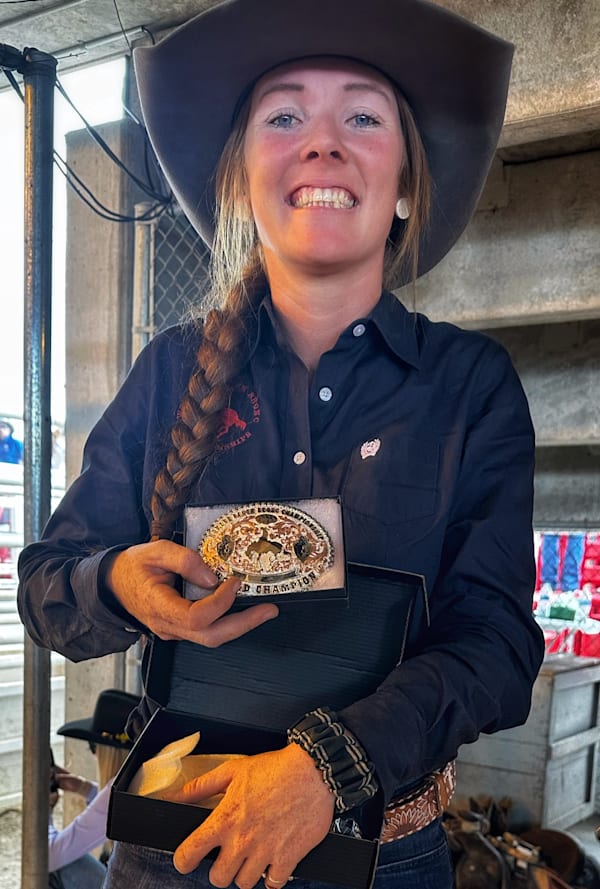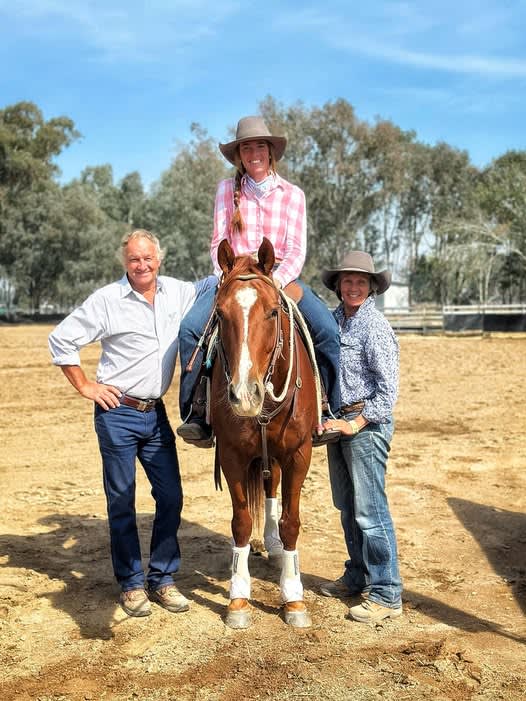The Camel Milk Company Australia is busy.
On a single day in early November, Channel Nine was there conducting an interview as news had just broken that camel milk was now recognised under the Dairy Act of Victoria, allowing the product to fall under dairy food safe legislation and as a result make licensing and export easier.
An older farming couple had pulled into the car park enticed by the paddock after paddock of browsing camels, and were inquisitive to know more.
And unanticipated, a busload of 24 on a Probus excursion had suddenly arrived keen to participate in a tour of the farm.
Megan Williams, co-owner of the Camel Milk Company, had sprung into action and within minutes chairs had been set-up and displays positioned and the tour had begun.
Latest Stories
This would be her first group for the week, but the following two days had three tours already booked in, and this was all on top of running a working farm and negotiating a family of three young boys, one at home, one at kinder and one at school.
Megan and her husband, Chris, live on-farm on 480 acres just outside of Kyabram, and run between 300 and 400 camels at any one time.
The camels predominantly come from the outback, wild camels that roam the vast open space descended from the original camels brought over by cameleers from Afghanistan in the 1860s.
Fundamental to the colonisation of the Australian interior, the cameleers and their camels worked in nearly all areas of transportation from exploration, to mining and the supply of provisions to homesteads.
The introduction of cars and trucks into Australia in the 1920s, saw the camels and their handlers become redundant, and though some cameleers remained and became small property owners the majority returned home.
Taking the camels home wasn’t really an option, and the cameleers were instructed to shoot their camels.
“These people had the strongest bonds with their beasts and been made to sleep with their camels as they weren’t allowed into mainstream community,” Megan said.
“They had a rough time, and with their camels had played an incredible role in building and pioneering outback Australia, so when they were told to shoot the camels many set them free.”
With no natural predators, apart from humans and a climate to which they are particularly suited, the camels have thrived and as such are considered a pest, ringbarking trees, wrecking water bores and troughs, and destroying pastoralists’ fencing.
Aerial culls have more than halved the estimated number of wild camels in Australia, with the total reduced from 750,000 to 300,000 in the last decade.
However, with an animal that is fairly easy to domesticate, wholesale culling may not be the best use of this resource.
When the original Afghani camels were brought over only the biggest and strongest were chosen for the task, and the core genetics of the Australian camels are now superior to their Middle Eastern ancestors.
Australia also has the only disease free status in the world for camel-spread Middle East Respiratory Syndrome Coronavirus, and as such the camels themselves are sought after as an export item, and Australian produced camel milk does not require boiling first before consumption.
With shortages in camel products and camel milk due to the virus which is transferable between camels and people and specifically through camel products, there is a huge overseas and burgeoning local market for Australian camel milk.
It was this perceived demand for camel milk that inspired Megan and Chris Williams to take the leap of faith in 2014 and turn their interest in camels into a business.

“Chris and I met in 2008 in Alice Springs,” Megan said.
“Chris was from Wales and was on a working visa, and I was a tour guide out at Uluru, and learning heaps, among other things, about early explorers and camels.
“I was just really intrigued with them.
“Now I’m a born and bred Kyabram girl.
“I went to school here and learned my trade here.
“The community is amazing and incredibly supportive, and I always perceived myself returning.
“I never really enjoyed school, preferring working on my parents’ property, and wanted to follow my father into dairy.
“So when Chris and I decided to leave the Northern Territory, we moved to the original family farm, and share farmed with my mum and dad.
“But obviously there was something about camels that had caught my attention, and after watching this fascinating documentary on camel milk and its health benefits, I said to Chris ‘We’re going to milk camels’.
“I don’t know how serious he thought I was at the time, but I kept sending him all these links about camel milk, about what camels eat, about how we could house them, and in 2014 the first three camels arrived on our, then, 107 acre property.
“The original three came from Bordertown in South Australia, and the lady who had them had got them wild and tamed them down.
“This was lovely for us - newbies to working up close and personal with camels – and we also did a camel handler course with a gentleman called Peter Hodge, who is amazing with camels and conducts camel rides all over Australia.
“Peter explained what he did with the camels but always emphasised that we needed to do what worked for us.
“So he taught us about camels, and we taught ourselves about milking them.”
Milking a camel is a slow process.
There is the transition from the dry paddock to the maternity paddock with halter and lead feeding to ready them for being handled twice daily when milking.
Camels have their first calf when they’re between four and five years old, and are pregnant for between 12 and 14 months, naturally weaning the calf off at about the 18 month mark.
The Camel Milk Company will not join camels when they’re milking, and as a result the camels only calve every three to three and a half years.
The calves are born without a hump (which is effectively a fat deposit that develops over time) and are kept with the mothers exclusively for up to a week to ensure they get the essential colostrum for their gut and overall health.
The mother camel and her calf are then walked through the purpose built dairy to acclimatise them both to the space.
As the calf’s suckling is needed to stimulate milk production and let down in the mother, the camels are always stopped in the milking position with their babies beside them.
The milking machinery is then turned on so that they get used to the noise and only when both the mother and calf are comfortable with the entire process, does the Camel Milk Company even attempt to milk.
“You can’t just take milk from a camel,” Megan said.
“They have to give it to you.
“It has to be relaxed enough to milk, in a safe and gentle environment.
“Otherwise it won’t give you milk.
“A tell-tale sign with an unhappy camel is its poo.
“Normally round and firm, as soon as it becomes runny, we know they are upset and nervous and that’s when we stop and only ever progress when the camel is ready.”
Although individual camels all respond a little differently, this set routine introducing the mothers to milking seems to work for the Camel Milk Company.
Once the routine is set, the baby camels are separated from the mothers for two hours before milking to develop an appetite.
The mothers are then led into the yards in the dairy, with a bar at either end of the camel to secure it in place.
The calf which has been tethered on one side of the dairy is then led over to the mother, the pairs identifiable by ear tags on the mother matching a velcro collar on the baby.
Let off, the calf suckles and stimulates the letdown, and only then are the cups from the mini milkers put on the camel’s teats, milking from the side as opposed to from behind like with cows.
The camels are never over-milked to ensure there is enough milk left for the calves, and as a result each beast produces about five litres a day, with the Camel Milk Company currently milking 60 of their 300 plus camels.
Batch pasteurised at a gentle 63 degrees, the milk is hot held for 30 minutes and then gradually cooled.
Incredibly white and slightly salty to the taste, the milk is as natural as can be and is not homogenised.
It is touted for its benefits to skin and gut health, and is high in potassium, magnesium, calcium, iron and a source of vitamin C.
“Low in fat and lactose, and not containing any whey proteins, it is perfect for those with intolerances and allergies,” Megan said.
“And it’s considered a whole food, so if you were to survive on camel milk alone it would sustain you.”
With this in mind, and the knowledge of the invaluable work that camels did in colonising Australia, it is easy to see what initially intrigued Megan and Chris with these curious creatures.
Their commanding presence and guttural moaning, along with an over-riding inquisitiveness, makes them incredibly endearing and a more than exciting farming prospect.
And though the Williams initially were met with good-natured chuckles when they began their camel dairy, they have become industry leaders, the biggest dairy of its kind in Australia and a source of Kyabram pride.












